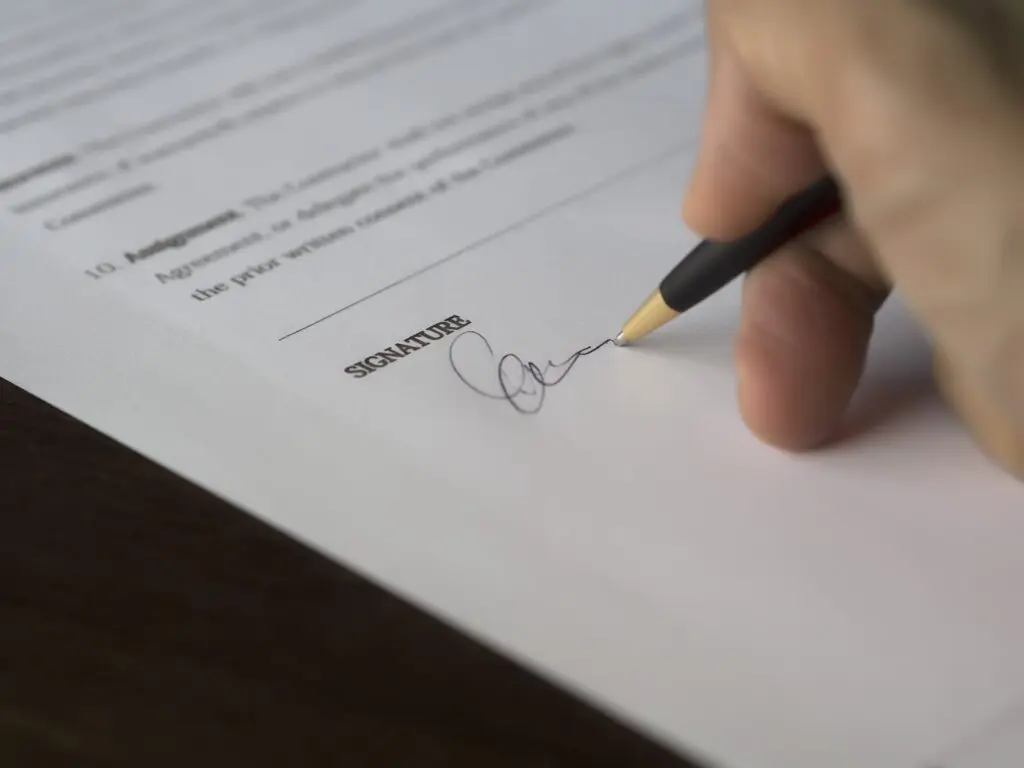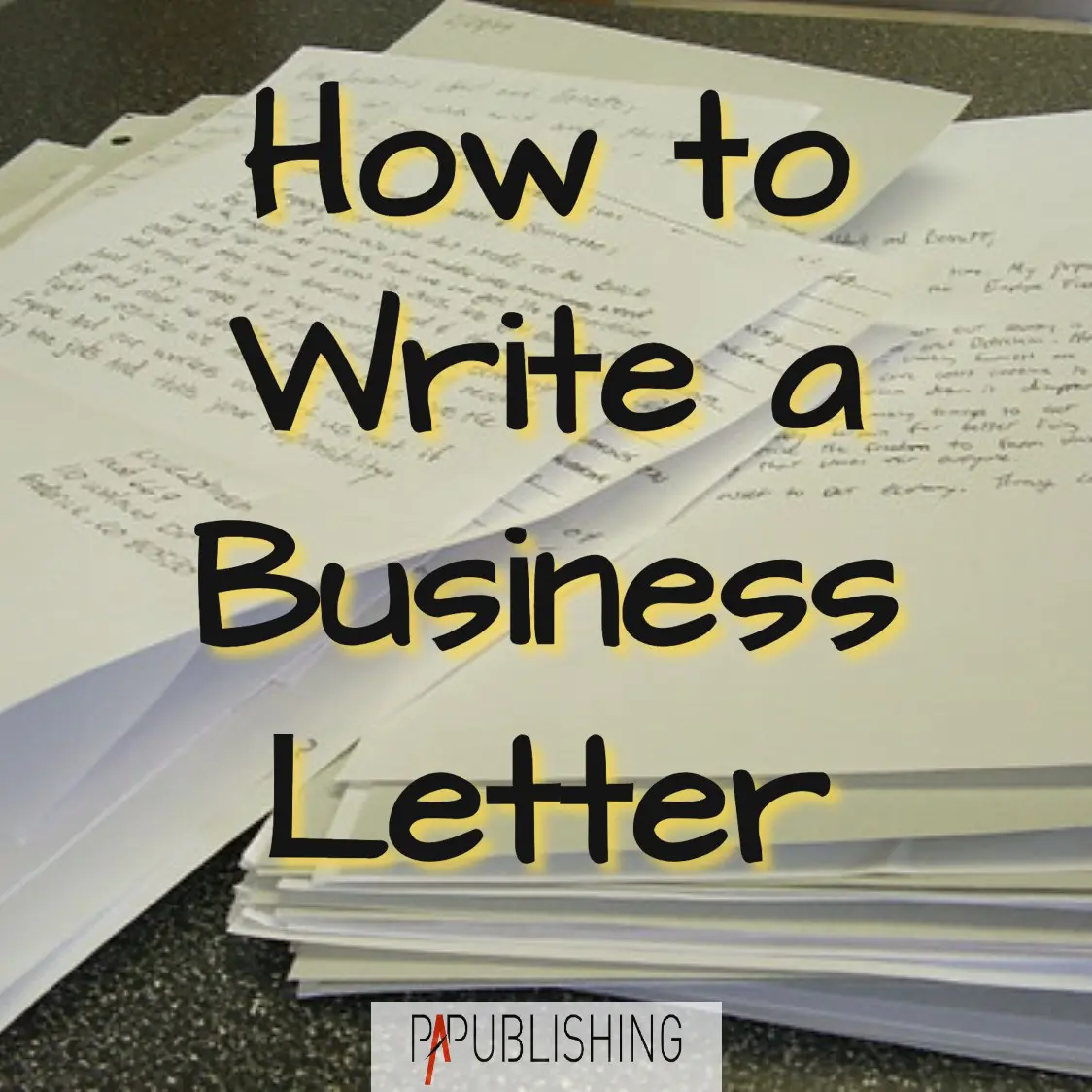How to Write a Business Letter: Effective communication is essential for maintaining successful business relationships in the professional world. Whether you are communicating with clients, customers, or colleagues, writing a well-crafted business letter can make all the difference in conveying your message clearly and professionally. However, mastering the art of writing a business letter requires more than just basic grammar skills; it requires an understanding of proper formatting, tone, and persuasive techniques.
Let’s delve into the essential tips and tricks to elevate your business letter-writing game. From addressing your recipient appropriately to using persuasive language effectively, we have gathered expert advice and practical strategies to help you confidently communicate and achieve desired outcomes through your written correspondence. So whether you are drafting a formal proposal or simply sending a follow-up email after a meeting, let us guide you on writing compelling business letters that leave a lasting impression on their recipients.
Understanding the Basics: Business Letter Format and Structure
Business Letter Format and Structure
A well-written business letter follows a specific format and structure to ensure clarity and professionalism. Here are some essential guidelines to keep in mind:
- Heading: Place your contact information, including your name, title, company name, address, phone number, and email address at the top of the page.
- Date: Include the date when you’re writing the letter.
- Recipient’s Information: Below your contact details, provide the recipient’s name, title or position (if known), company name or organization they belong to (if applicable), and their address.
- Salutation: Start with a formal greeting like “Dear Mr./Ms.” followed by the recipient’s last name.
- Introductory Paragraph: Begin with a concise introduction explaining who you are and why you’re writing this letter.
- Main Body: The body of the letter should consist of clear paragraphs that convey relevant information or arguments relating to your purpose for writing.
- Closing Paragraph: End with a concluding paragraph that summarizes key points discussed in the previous section while expressing any necessary requests or actions required from the recipient.
- Complimentary Close: Finish off with a courteous closing such as “Sincerely,” “Best regards,” or “Yours faithfully” before signing off with your full name and job title below it.
- Enclosures: If any additional documents are enclosed with your letter, such as resumes or reports, include an “Enclosure” line after your signature.
How to Write a Business Letter: By following these formatting guidelines along with maintaining precise language throughout your business letter will guarantee professional communication every time!

Setting the Right Tone: Professional Language and Etiquette
Setting the Right Language and Etiquette
How to Write a Business Letter: Using professional language and maintaining proper etiquette is essential when writing a business letter. Here are some tips to help you set the right tone:
- Use Formal Language: Avoid slang, colloquialisms, or abbreviations in your business letter. Stick to formal language that conveys professionalism.
- Be Courteous and Polite: Begin your letter with a respectful salutation such as “Dear Mr./Ms.” followed by the recipient’s last name. Use polite phrases like “please” and “thank you” throughout the letter.
- Maintain a Neutral Tone: Remain impartial and avoid using overly emotional language or biased statements in your business correspondence. Present information objectively to build credibility.
- Avoid Jargon: Unless you are communicating with someone from within your industry who understands specialized terminology, keep your language simple and clear for wider comprehension.
Remember, maintaining professional language and etiquette is crucial for establishing credibility, building relationships, and achieving effective communication in the world of business letters.
Crafting a Compelling Opening: How to Hook Your Reader
First impressions are crucial in business correspondence. To capture your reader’s attention, begin with an engaging opening that leaves no room for disinterest or dismissal.
- Start with a compelling anecdote or relevant statistic to pique curiosity and highlight the importance of your message.
- Pose a thought-provoking question that stimulates the reader’s curiosity and encourages them to continue reading for the answer.
- Use concise language and straightforward sentence structures to convey your main point clearly and effectively.
Remember, an effective opening sets the tone for the rest of your letter, so investing time in crafting it is a wise choice.
Making Your Point: Writing Clear and Concise Body Paragraphs
- Keep your paragraphs focused and concise. Each paragraph should convey one main idea or point.
- Use topic sentences to introduce the main point of each paragraph clearly.
- Use clear and straightforward language. Avoid using complex jargon or technical terms that may confuse your reader.
- Support your points with evidence or examples. This will help to strengthen your argument and make it more convincing.
- Ensure that your paragraphs flow smoothly from one to another by using transition words and phrases such as “Furthermore,” “In addition,” or “On the other hand.”
- Proofread your paragraphs for grammatical, punctuation, or spelling errors before finalizing them.
How to Write a Business Letter: Remember, business letters are meant to be concise and clear, so it’s important to craft each body paragraph to effectively communicate your message carefully.
Persuasive Techniques: Strategies for Influencing Your Reader
- Use emotive language: Emotionally charged words can evoke strong feelings in your reader, making them more likely to agree with your message. For example, instead of saying “Our product is of high quality,” you could say “Our exceptional product guarantees unparalleled satisfaction.”
- Employ the power of social proof: People tend to follow the actions and opinions of others. Highlight customer testimonials or statistics showing many people who have benefited from your product or service. This will help build trust and persuade your reader that they should also choose your business.
- Create a sense of urgency: You can motivate readers to take immediate action by emphasizing limited availability or time-sensitive offers. Phrases like “Limited stock available” or “Offer ends tomorrow” convey a sense of scarcity and encourage prompt decision-making.
Using these persuasive techniques can significantly increase the impact and effectiveness of your business letter, ultimately influencing your reader’s response in favor of what you’re advocating for.
For additional tips on writing powerful business letters, continue reading below!

Mastering the Art of Closing: Concluding Your Letter Strongly
Concluding a business letter effectively is crucial for leaving a lasting impression and ensuring that your message is clear. Here are some essential tips to help you master the art of closing your letter:
- Choose an appropriate closing: Select a professional closing that aligns with the tone and purpose of your letter. Common options include “Sincerely,” “Best regards,” or “Thank you.”
- Summarize key points: In one or two sentences, recap the most important information in your letter’s body. This helps reinforce your main message and ensures that it remains fresh in the reader’s mind.
- Provide next steps or follow-up actions: If applicable, outline any necessary action items or indicate what you expect from the recipient moving forward. Clear instructions will make it easier for both parties to proceed and maintain effective communication.
Remember, ending a business letter on a strong note allows you to leave a memorable impact while ensuring that your intended message is understood by its recipient.
Polishing Your Presentation: Proper Formatting and Design Tips
Proper Formatting and Design Tips
How to Write a Business Letter: To create a polished and professional business letter, it is important to pay attention to the formatting and design. Here are some tips to help you achieve this:
- Use a standard font and font size: Stick to simple fonts such as Arial or Times New Roman, and use a font size of 10 or 12 for easy readability.
- Maintain consistent spacing: Double-space your letter for clarity, leaving enough room between paragraphs for visual separation.
- Align your text correctly: Align your text to the left side of the page with a ragged right edge—this is the standard format for business letters.
- Include appropriate margins: Leave equal margins at the top, bottom, left, and right sides of your letter.
- Keep it concise: Aim for brevity by using short sentences that get straight to the point—avoid unnecessary fluff that can detract from your message.
- Use bullet points or numbered lists when appropriate: If you need to present information in a list format, consider using bullet points or numbers to make it more visually organized.
By following these formatting and design tips, you can enhance the overall appearance of your business letter and ensure that it conveys professionalism effectively.
Avoiding Common Pitfalls: Mistakes to Watch Out for in Business Letter Writing
When writing a business letter, it is important to avoid common mistakes that can undermine the effectiveness and professionalism of your message. Here are some key pitfalls to watch out for:
- Lack of clarity: Be concise and clear in your language, ensuring that the reader easily understands your message. Avoid using jargon or complex terminology that may confuse or alienate your audience.
- Grammatical errors: Double-check for proper grammar, spelling, and punctuation before sending any business letter. Simple mistakes can make you appear careless and unprofessional.
- Poor formatting: Pay attention to the layout and format of your letter, as this affects readability. Use an appropriate font size (12 pt), standard fonts like Arial or Times New Roman, adequate spacing between paragraphs, headings for different sections if necessary (e. g., “Introduction,” “Body,” “Conclusion”), and include a professional closing with your signature at the end.
Remember that a well-written business letter reflects positively on both yourself and your company. Taking extra care to avoid these common pitfalls will ensure you communicate clearly and professionally every time.



One Reply to “How to Write a Business Letter: Essential Tips and Tricks”
Comments are closed.